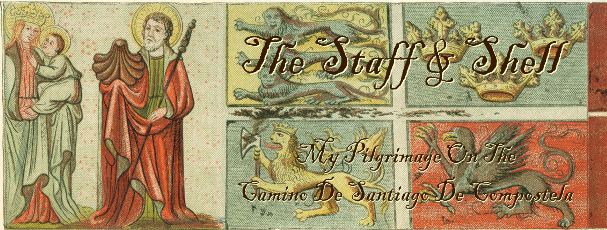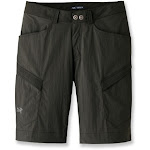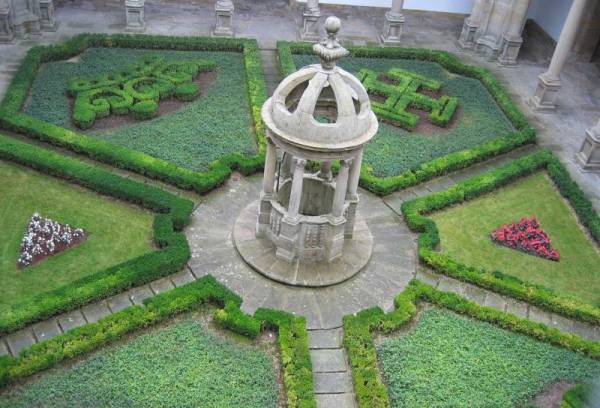 Palm Sunday is a Christian moveable feast which always falls on the Sunday before Easter. The feast commemorates an event mentioned by all four Canonical Gospels: the triumphant entry of Jesus into Jerusalem in the days before his Passion.
Palm Sunday is a Christian moveable feast which always falls on the Sunday before Easter. The feast commemorates an event mentioned by all four Canonical Gospels: the triumphant entry of Jesus into Jerusalem in the days before his Passion.In many Christian churches, Palm Sunday is marked by the distribution of palm leaves (often tied into crosses) to the assembled worshipers. The difficulty of procuring palms for that day's ceremonies in unfavorable climates for palms led to the substitution of boughs of box, yew, willow or other native trees. The Sunday was often designated by the names of these trees, as Yew Sunday or by the general term Branch Sunday.
According to the Gospels, before entering Jerusalem, Jesus was staying at Bethany and Bethphage, and the Gospel of John adds that he had dinner with Lazarus, and his sisters Mary and Martha. While there, Jesus is described by the Synoptic Gospels as sending two unnamed disciples to the village over against them, in order to retrieve a donkey that had been tied up but never been ridden, and to say, if questioned, that the donkey was needed by the Lord but would be returned in a short period of time. Jesus then rode the donkey into Jerusalem, with the Synoptics adding that the disciples had first put their cloaks on it, so as to make it more comfortable. The Gospels go on to describe how Jesus rode into Jerusalem, and how the people there lay down their cloaks in front of him, and also lay down small branches of trees. The people are also described as singing part of Psalm 118 - ...Blessed is He who comes in the name of the Lord. Blessed is the coming kingdom of our father, David. ... (Psalms 118:25-26). Where this entry is supposed to have taken place is unspecified; some scholars argue that the Golden Gate is the likely location, since that was where it was believed the Jewish messiah would enter Jerusalem; other scholars think that an entrance to the south, which had stairs leading directly to the Temple, would be more likely (Kilgallen 210). According to Jewish tradition (Sefer ha Zohar, part about donkey driver) the one who is able to bridle and ride a colt (or donkey) has a status of Messiah.
It was a common custom in many lands in the ancient Near East to cover, in some way, the path of someone thought worthy of the highest honour. The Hebrew Bible (2Kings 9:13) reports that Jehu, son of Jehoshaphat, was treated this way. Both the Synoptic Gospels and the Gospel of John report that people gave Jesus this form of honour. However, in the synoptics they are only reported as laying their garments and cut rushes on the street, whereas John more specifically mentions palm fronds. The palm branch was a symbol of triumph and of victory, in Jewish tradition, and is treated in other parts of the Bible as such (e.g. Leviticus 23:40 and Revelation 7:9). Because of this, the scene of the crowd greeting Jesus by waving palms and carpeting his path with them has given the Christian festival its name. It also shows the freedom wanted by the Jews, and their desperation to have political freedom.
On Palm Sunday, in the Roman Catholic Church, as well as many Anglican churches, palm fronds (or in colder climates some kind of substitutes) are blessed with an aspergilium outside the church building (or in cold climates in the narthex when Easter falls early in the year) and a procession enters, singing, re-enacting the entry into Jerusalem.
The palms are saved in many churches to be burned the following year as the source of ashes used in Ash Wednesday services. The Roman Catholic Church considers the palms to be sacramentals. The vestments for the day are deep scarlet red, the color of blood, indicating the supreme redemptive sacrifice Christ was entering the city who welcomed him to fulfill- his Passion and Resurrection in Jerusalem.
It is customary in many churches for the worshippers to receive fresh palm leaves on Palm Sunday. In parts of the world where this has historically been impractical substitute traditions have arisen.
Latvia
In Latvia, Palm Sunday is called "Pussy Willow Sunday," and pussy willows - symbolizing new life - and blessed and distributed to the faithful. Children are often woken that morning with ritualistic swats of a willow branch. People also catch each other and spank each other with the branches.
Netherlands
In the Saxon regions of the Netherlands, crosses are decorated with candy and bread, made in the form of a rooster. In the diocese of Groningen-Leeuwarden a great procession with oil lamps is held the night before Palm Sunday in honour of the Sorrowful Mother of Warfhuizen.
Poland
Many Polish towns and villages (the best known are Lipnica Murowana in Małopolska and Łyse in Podlasie) organize artificial palm competitions. The biggest of those reach above 30 meters in length; for example, the highest palm in 2008 had 33.39 meters.
The Philippines
In the Philippines, there are some places where a re-enactment of Jesus' triumphal entry occurs. The priest rides a horse and is surrounded by the congregation, bearing palms. Sometimes women spread large cloths or aprons along the procession route. Palm branches, called palaspas, are taken home after the Mass and are hung beside, on or above doorways and windows.
Instructions on how to make palm Crosses to tuck behind picture frames and hang on your wall:
 Take a palm that is about 2 feet long and 1/2" wide (if it tapers at the top, this is good!). Hold the palm upright, so the tapered end points toward the ceiling.
Take a palm that is about 2 feet long and 1/2" wide (if it tapers at the top, this is good!). Hold the palm upright, so the tapered end points toward the ceiling. Then bend the top end down and toward you so that the bend is about 5 or 6 inches from the bottom of the palm.
Then bend the top end down and toward you so that the bend is about 5 or 6 inches from the bottom of the palm. About a third of the way from the bend you just made, twist the section you've pulled down to the right, forming a right angle.
About a third of the way from the bend you just made, twist the section you've pulled down to the right, forming a right angle. About an inch and a half away from the "stem" of the cross, bend this arm of the palm back behind the palm so that it is now facing to your left. Make the bend at a good length to form the right arm of the Cross.
About an inch and a half away from the "stem" of the cross, bend this arm of the palm back behind the palm so that it is now facing to your left. Make the bend at a good length to form the right arm of the Cross.  Folding that same section at a point that equals the length on the right side, bend it on the left side and bring the end forward over what is now the front of the cross.
Folding that same section at a point that equals the length on the right side, bend it on the left side and bring the end forward over what is now the front of the cross. From the very center of the Cross, fold that arm up and to the upper right (in a "northeast" direction) so that it can wrap around where the upright post of the Cross and the right arm intersect.
From the very center of the Cross, fold that arm up and to the upper right (in a "northeast" direction) so that it can wrap around where the upright post of the Cross and the right arm intersect. Fold this down and to the left behind the Cross...
Fold this down and to the left behind the Cross... ...and then fold it toward the right so that it is parallel and under the transverse arms of the Cross.
...and then fold it toward the right so that it is parallel and under the transverse arms of the Cross. Bring it up behind the Cross again, this time folding it up toward the "northwest" direction.
Bring it up behind the Cross again, this time folding it up toward the "northwest" direction. Tuck the tapered end into the transverse section you made in step 7...
Tuck the tapered end into the transverse section you made in step 7... ...and pull through.
...and pull through.  Turn the Cross over; this side will be the front. Trim the tapered end if necessary, remembering that the palm is a sacramental and any part you trim away should be kept and respected as a sacramental! Use that piece for burning during storms.
Turn the Cross over; this side will be the front. Trim the tapered end if necessary, remembering that the palm is a sacramental and any part you trim away should be kept and respected as a sacramental! Use that piece for burning during storms. 




































No comments:
Post a Comment